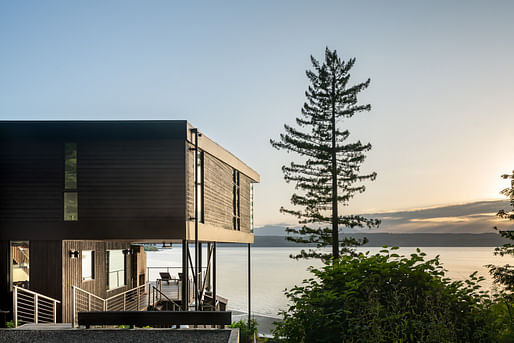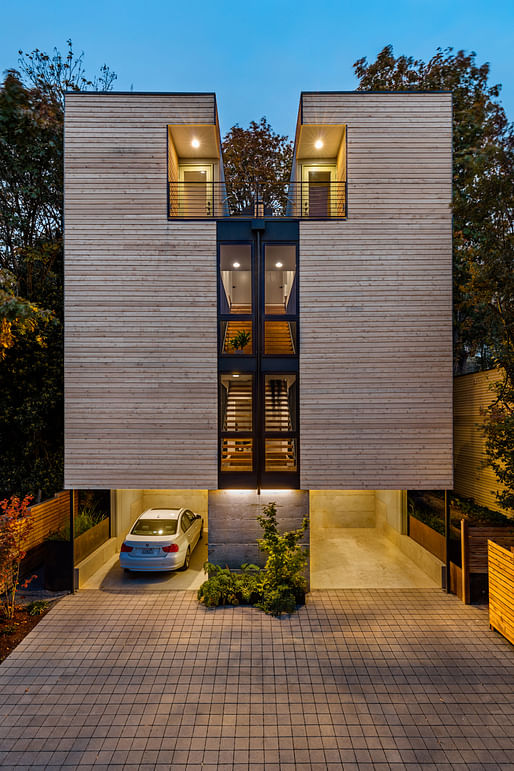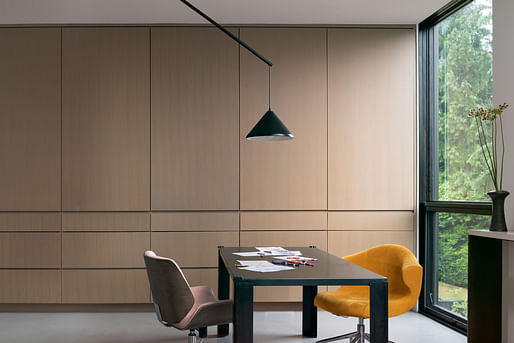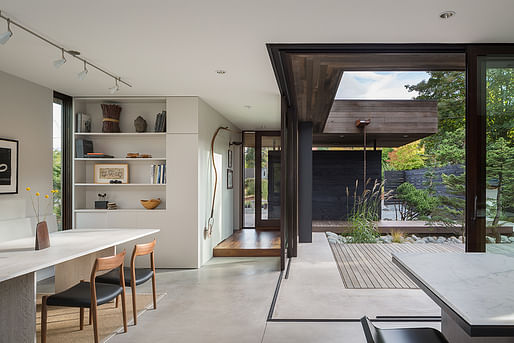
Following last week’s visit to Wyoming-based Dynia Architects, we are moving our Meet Your Next Employer series to Seattle this week to explore the work of Wittman Estes.
Founded in 2012, and spanning architecture and landscape operations, the firm operates on “the idea that buildings and landscapes can be combined into one interconnected whole.” Back in 2017, Archinect sat down with firm founders Matt Wittman and Jody Estes as part of our Studio Snapshot series, in which the duo described their firm as “part of a new movement of young Seattle practices who reject architecture as object and shape-driven form-making in favor of an architecture of experience and site connection.”
Over on Archinect Jobs, the firm is currently hiring a Drafter/Designer to join their Seattle office. For candidates interested in applying for the position, or anybody interested in learning about the firm’s output, we have rounded up five contemporary timber homes by Wittman Estes that exemplify the studio’s ethos.

Located on the eastern shore of Hood Canal, the Aldo Beach House project saw a 1940s beach house transformed into a new multi-generational home. The scheme is composed of two shifting wings hovering over the hillside, supported by thin steel columns and pin piles.

“The original structure interplays throughout,” the team says. “Reclaimed pine flooring draws the Olympic forest to the interior. The existing brick chimneys blend into this palette, evoking timelessness and strength, representing the unique transformation of the house.”

Designed with Seattle’s high construction costs, the Tsuga Townhomes was designed as a "low-cost high-quality" scheme. The three-unit urban infill project was completed at a cost of $185 per square foot: a 54% reduction in cost from Seattle, with Wittman Estes serving as both architect, client, and developer.

“Local Western Red Hemlock, also known as Tsuga wood, is a historic material used by local Salish people,” the firm explains. “Woodcraft and detailing using Tsuga screens were incorporated into the interiors. Access to sunlight and connection to nature were guiding design principles, seeking a long-lasting building suited to Seattle’s dark and wet northern climate. The vertical, expression of the duplex and textures of cedar recall both the woodcraft of the Salish tribes and the later heritage of the woodwork of Scandinavian settlers.”

The Hood Cliff Retreat comprises a series of family cabins hidden in the forest overlooking Washington’s Hood Canal. The existing 1960s cabin footprint was repurposed with a new cabin added alongside a new bunkhouse and bathroom to the north. As part of the process, reclaimed beams and siding from the original cabin were re-purposed as countertops and interior cladding, while simple details and a restrained material palette kept the construction budget to a minimum.

“We sought to dissolve the barriers between the inside and out, between forest, garden, and structure,” said Matt Wittman about the scheme. “Sunlight warms the plywood walls and ceilings, grazing the warm cedar boards and cast-in-place concrete – allowing shadow and light to transform the simple interior into something more complex and subtle.”

Located adjacent to a busy arterial street in Bellevue’s Clyde Hill neighborhood, the Yo-Ju Courtyard House comprises a suburban single-family home arranged around a garden courtyard. The entry courtyard functions as a threshold between the street and the interior, with a black-stained, tight-knotted cedar fence marking the next transition as a concrete path moves through a bed of grasses and a Japanese Maple tree. Inside, the material palette includes an oak casement for the kitchen, concrete flooring, and floor-to-ceiling sliding doors.

“The communal spaces open up in the center of the house while the private ones are situated at the front of the house on two levels,” the team explains. “Hidden in the private areas, the upper floor is arranged around a craft and teaching space for the family’s three children. In the communal spaces, the house opens up to the lounge and kitchen, and then onto the main living and dining.”

For their Madison Alpine Garden, Wittman Estes delivered landscape services for the scheme designed by architects mwlworks. Commissioned by a young couple seeking deeper connections to outdoor living and gardening, the team’s landscape strategy revolved around an urban courtyard garden.

“A living screen is part of a boundary wall around the property that filters views from inside the house and allows a feeling of intimate privacy and outward expansiveness to the landscape,” the team says. “Native bonsai pines and a high alpine planting palette were rescued from a defunct nursery and planted to evoke wild nature within an urban oasis.”

Meet Your Next Employer is one of a number of ongoing weekly series showcasing the opportunities available on our industry-leading job board. Our Job Highlights series looks at intriguing and topical employment opportunities currently available on Archinect Jobs, while our weekly roundups curate job opportunities by location, career level, and job description.
No Comments
Block this user
Are you sure you want to block this user and hide all related comments throughout the site?
Archinect
This is your first comment on Archinect. Your comment will be visible once approved.